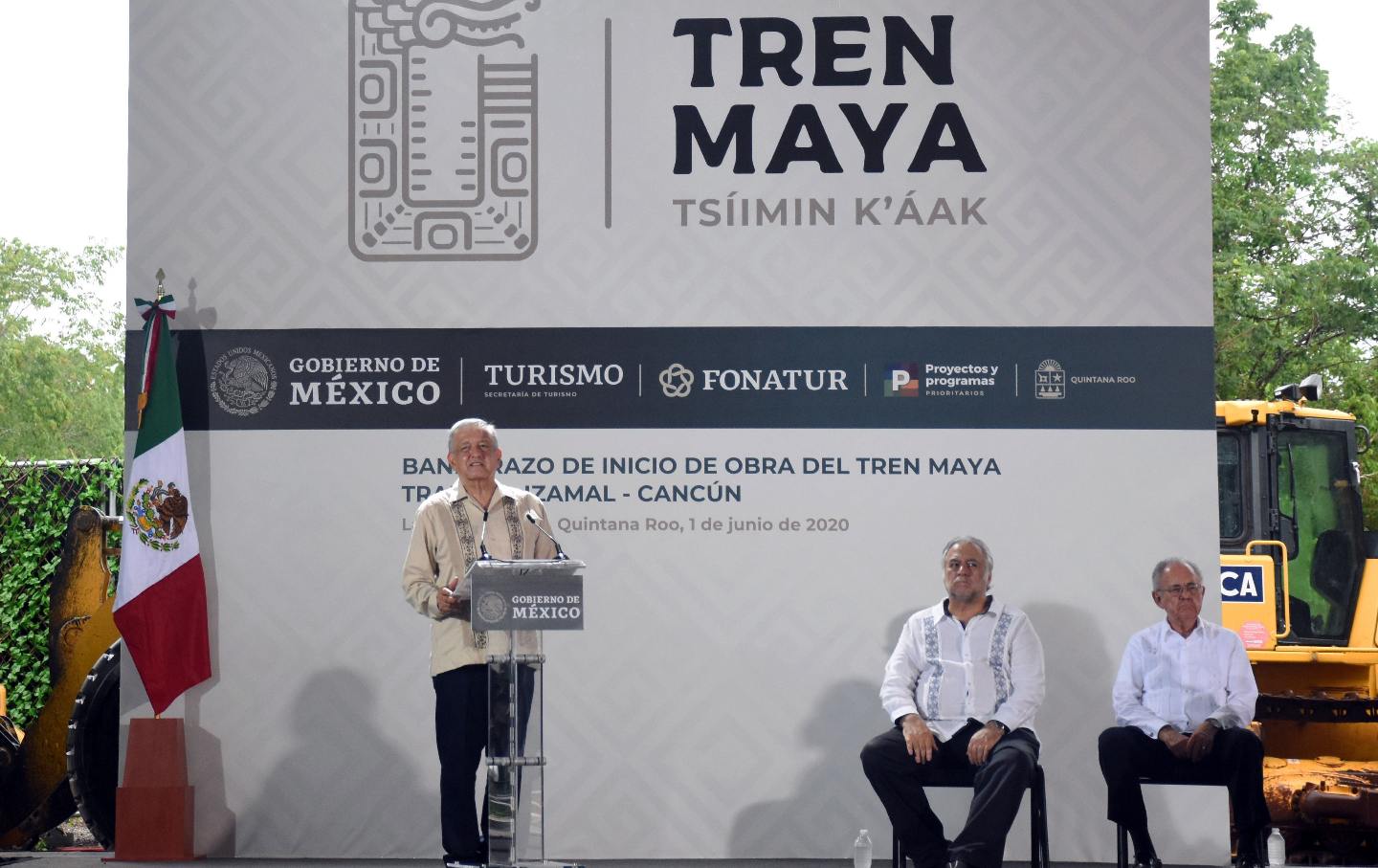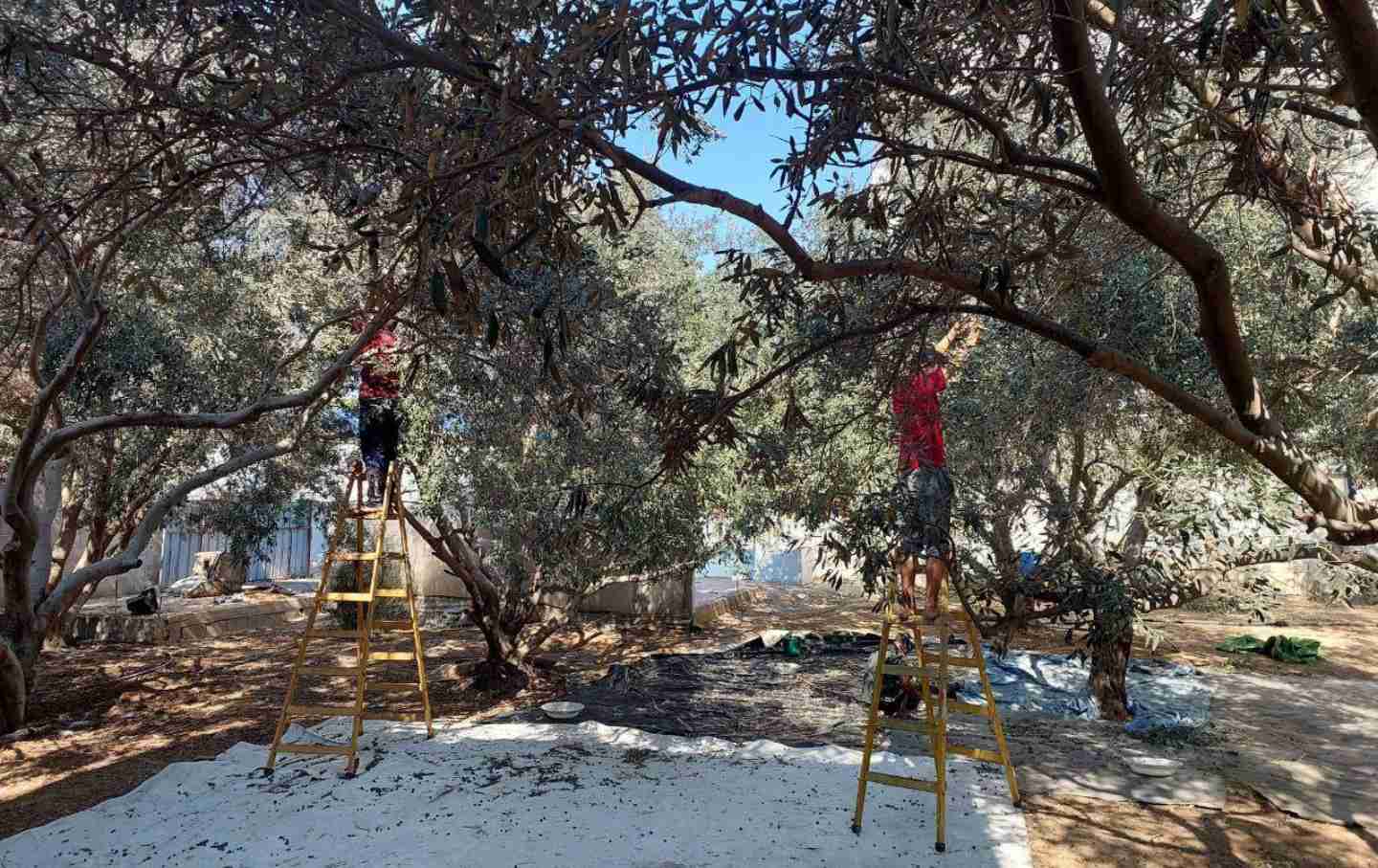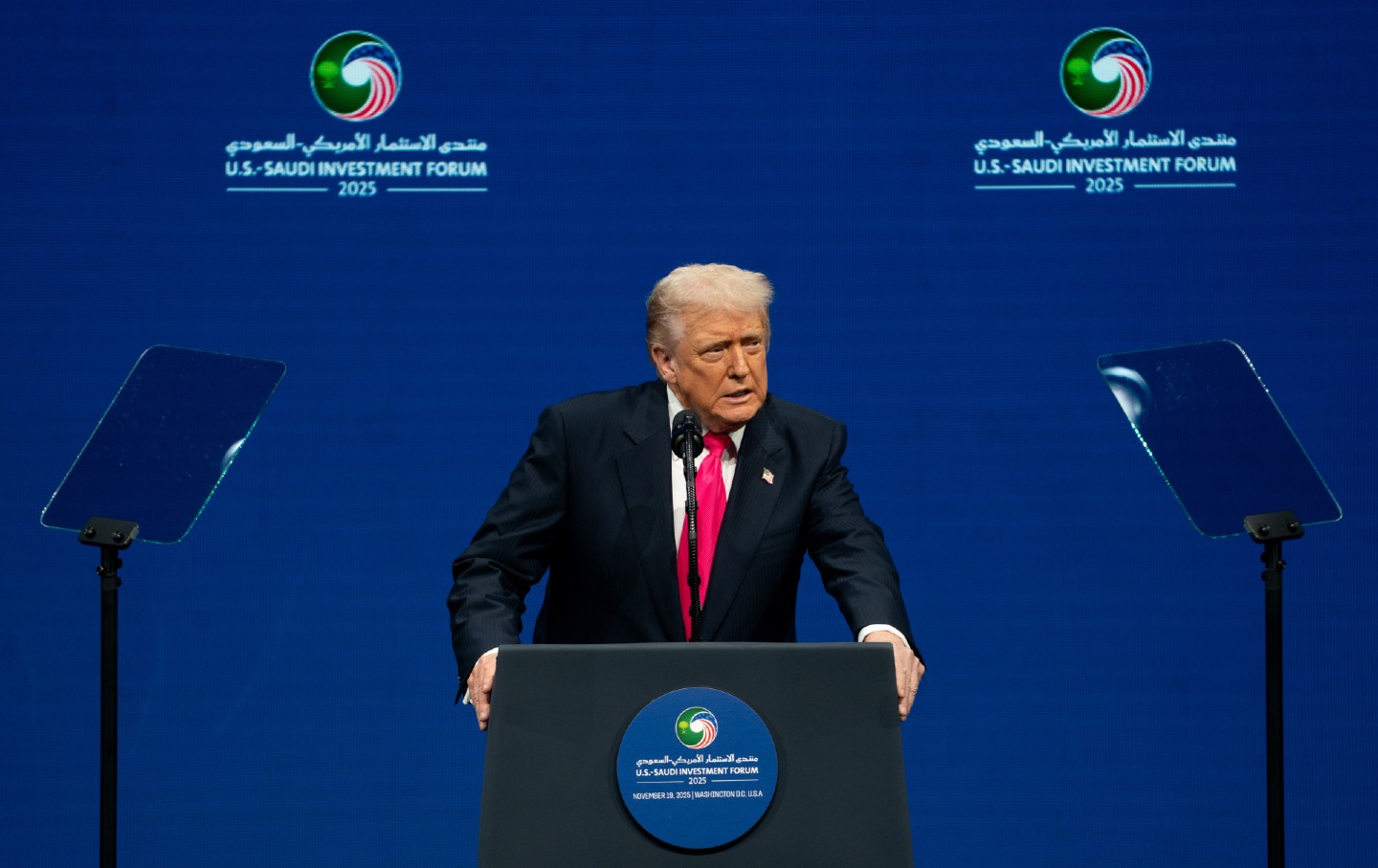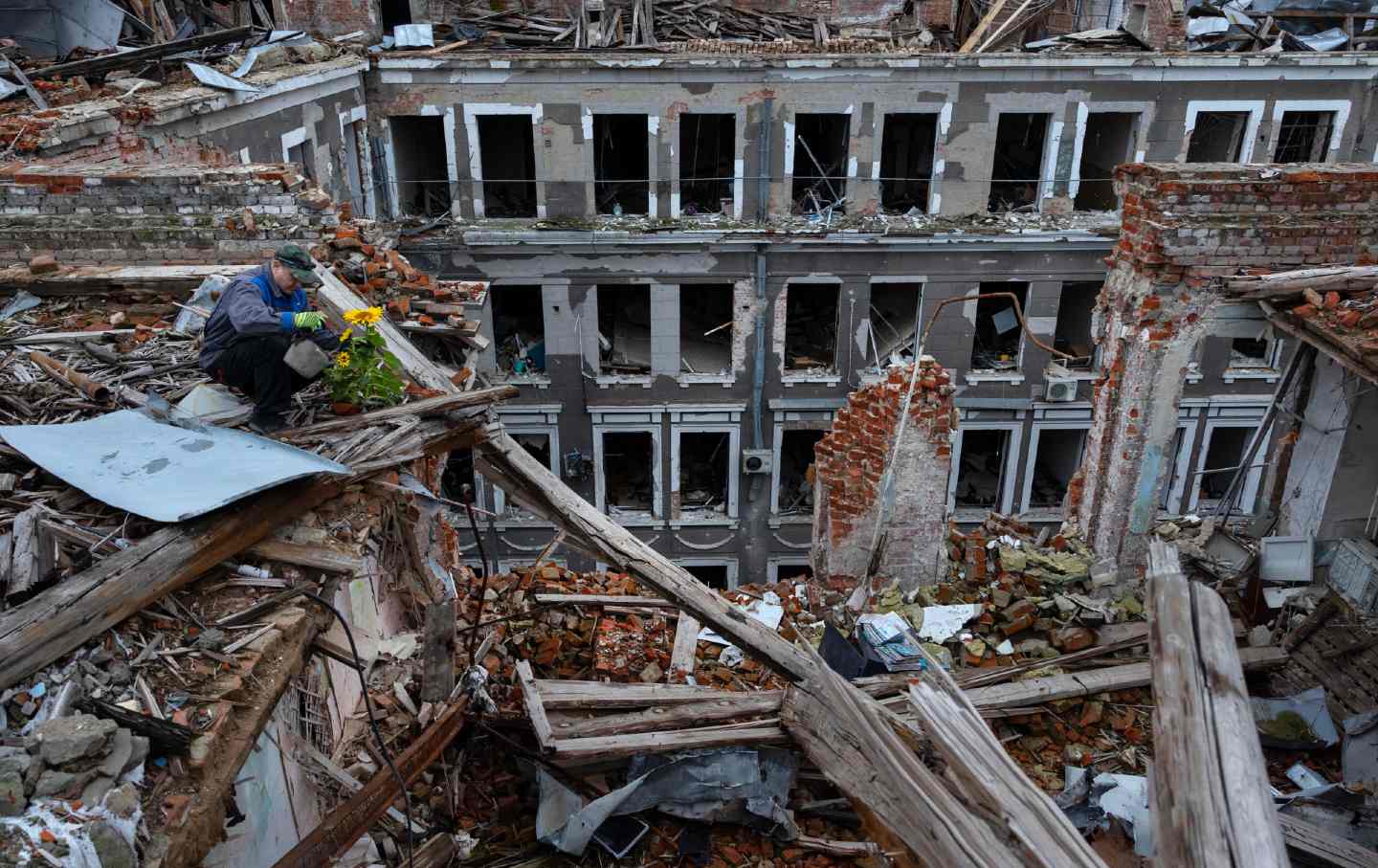Mexico’s Tren Maya: Megaproject of Death—or Hope?
More than just a train, the scale of the project is enormous. And its effects are already visible.

Mexican President Andres Manuel Lopez Obrador speaks during the laying of the first stone of the Tren Maya tourist line, in El Ideal, Quintana Roo State, Mexico, on June 1, 2020.
(Elizabeth Ruiz / AFP via Getty)Given the US media’s persistent bias against Mexican President Andrés Manuel López Obrador (AMLO), it can be difficult for Western audiences to understand what’s happening in Mexico, let alone to get any grasp of the policies, projects and programs that make up AMLO’s “Fourth Transformation.” The media’s general disdain leads to an inability to explain the unprecedented support the president still enjoys five years into his six-year term, the numerous electoral wins of his party, Morena (founded less than a decade ago), or its likely victory in the general election next year.
AMLO’s popular support is even greater in Mexico’s long-neglected south and southeast, where a 1,554 km railway, referred by some as a “megaproject of death,” is being built. Once completed, the trains will serve both passengers (tourists and local population) and cargo. The scale of the Tren Maya (Mayan Train) is indeed enormous, and the effects of its construction—in full swing as the government aims for service starting this December—are already very visible. But then Tren Maya is indeed “more than just a train.”
In geographical terms, the Fourth Transformation’s motto, “For the benefit of all, the poor come first,” means a special attention to the south. This region has received unprecedented public investment since AMLO took office, while key national interventions have also had a special emphasis there, such as Sembrando Vida (Sowing Life), a rural program to improve food self-sufficiency and alleviate poverty. Sembrando Vida pays and assists farmers to implement agroecological systems, which include traditional maize cultivation as well as fruit and timber. In the five states touched by the Tren Maya (Chiapas, Tabasco, Campeche, Yucatán, and Quintana Roo) the program benefits 170,000 peasants and has resulted in the reforestation of 400,000 hectares.
Similarly, the Secretariat of Agrarian, Territorial, and Urban Development has built over 170 high-quality public spaces in municipalities along the route of the train and is also coproducing housing upgrades benefiting tens of thousands of low-income families. In many towns along the route, there are new community centers, parks, libraries, sporting grounds and museums. Many communities have also gained internet access, for free, through the Federal Electricity Commission. These kinds of material changes—together with hundreds of thousands of construction jobs on the Tren Maya project itself and associated infrastructure—are reviving local economies in towns and villages that until recently had been neglected by the state. The idea that the Tren Maya is a megaproject aimed at benefiting large capitalists at the expense of local people—as it has been portrayed by critics—is difficult to credit. But that’s not to say people don’t have questions—or that there are no genuine concerns.
“¡El Tren Maya no es Maya!” (The Mayan train is not Mayan) has been a rallying cry for those who oppose the project, arguing that it is an imposition on Indigenous peoples. The project certainly didn’t arise from a Mayan worldview, nor was it demanded by the region’s Indigenous communities. Indeed, the Indigenous consultation of December 2019 failed to comply with international standards, as reported by the UN High Commission on Human Rights. But it was the first time in Mexico’s history that the Indigenous inhabitants had ever been consulted—and since then, there have been numerous consultations to ensure that local voices are heard.
For example, in the south of Campeche, where the aquifer runs deep underground, access to water has been a long struggle. In the town of Xpujil, the fear that urbanization would be accelerated by the Tren Maya heightened such concerns. As a result of the process of Indigenous consultation, the federal government committed to guarantee the human right to water and is rehabilitating the 90-kilometer López Mateos-Xpujil aqueduct, benefiting more than 30,000 inhabitants in the Calakmul municipality. Work on the aqueduct will be completed this November.
Construction of Tramo 5, the most controversial section that runs along the Riviera Maya between Cancún and Tulum, has been radically modified to protect archaeological remains and the hundreds of caves, cenotes (sinkholes) and underground rivers the railway would cross. The Sac-Aktun system, for instance, is the largest underwater cave system on the planet, and its uniqueness and fragility became the focus of Sélvame del Tren (Save me from the train), a well-known campaign against the project.
However, a significant part of Tramo 5 will now be raised above ground through elevated viaducts, including a 290-metre suspension bridge—an adaptation that also enhances biological connectivity between the two sides of the railway. These elevated viaducts are a remarkable feat of engineering informed by hydrogeological studies and accompanied by teams of biologists, who have introduced ways to reduce impact on flora and fauna. Reforestation, wherever possible, has already started. Claims that cenotes are being filled with cement and that the viaducts’ concrete pillars will pollute the waters are simply untrue.
But the concern over the integrity of the underground water system that feeds much of the Yucatán peninsula is real. Such threats, however, have more to do with unplanned urbanization, inadequate sanitation, and polluting economic activities such as mono cropping and industrial pig farming. The big questions are thus how to avoid the negative repercussions of unplanned urbanization and of expanding tourism development in the peninsula, including a concomitant rise in the generation of solid wastes. Constitutionally, non-federal lands are regulated at the local level, and it is precisely because of the Tren Maya that a political agreement was reached in 2021 between the federal government and the states and municipalities affected by the project in order to produce a regional program of territorial planning. It is highly ambitious, but it is the most significant effort of the Mexican State to create a new model of development for the region that is both environmentally sustainable and socially just.
Other concerns have to do with the tourism industry, which the train project aims to expand inland in the Yucatán peninsula and toward the states of Tabasco and Chiapas. While tourism generates jobs and much needed opportunities, it is also highly predatory, and the State has few mechanisms to limit, for instance, the purchase of the communally owned (ejido) farmland that still makes up half of the Yucatán peninsula by private actors. The government’s stated aim of wanting to avoid repeating the Cancún model sounds great—and could well be sincere—but powerful actors will, as always, seek opportunities to reap the benefits. The National Fund for the Promotion of Tourism, the authority leading the Tren Maya project, signed an agreement with an alliance of regional networks of community tourism. But changes in the institution in 2022 left this agreement in limbo—not a very good sign for communities hoping to engage with tourism on their own terms.
One of the most controversial aspects of the Tren Maya is perhaps the least understood: the role of the military in the construction and operation of the train. Critics, who live mostly in central Mexico, the United States, or Europe, insist that this is a sign of “Mexico’s militarization”—a narrative that omits the underlying reasons behind the military’s involvement. Mexico is redirecting its armed forces toward civic purposes, including the construction of airports and the modernization and management of ports. There are security concerns in the region as criminal groups increase their presence, and protecting these new infrastructure projects is necessary. But one needs to be familiar with Mexican history to understand the precise risk this strategy aims to avoid. In the 1990s, the country’s publicly owned and operated 23,000-kilometer railroad network was privatized, resulting in the disappearance of all passenger trains. With the Ministry of Defense having a stake in the operation of the Tren Maya, any attempt to privatize it will face significant opposition.
The public operation of the Tren Maya also means that this modern and efficient mode of transport will remain affordable for the local population. The ecological merits are significant. Passages for wildlife are practically nonexistent in Mexico’s roads and highways. Tren Maya contemplates more than 400 of them. Nearly half of the route will be fully electric, with the remaining part using hybrid engines running on ultra-low emission diesel produced in the Dos Bocas refinery in Tabasco. The trains—42 of them—are being built by a consortium led by Alstom-Bombardier in the state of Hidalgo, creating thousands of jobs and developing a rail industry in one of Mexico’s poorest states. The Tren Maya shows AMLO’s determination to depart from neoliberal doctrine and to promote a development model that puts the most marginalized first.
For a majority of the long-ignored people in Mexico’s south, the train is indeed not just a train. It’s a megaproject of hope.
Disobey authoritarians, support The Nation
Over the past year you’ve read Nation writers like Elie Mystal, Kaveh Akbar, John Nichols, Joan Walsh, Bryce Covert, Dave Zirin, Jeet Heer, Michael T. Klare, Katha Pollitt, Amy Littlefield, Gregg Gonsalves, and Sasha Abramsky take on the Trump family’s corruption, set the record straight about Robert F. Kennedy Jr.’s catastrophic Make America Healthy Again movement, survey the fallout and human cost of the DOGE wrecking ball, anticipate the Supreme Court’s dangerous antidemocratic rulings, and amplify successful tactics of resistance on the streets and in Congress.
We publish these stories because when members of our communities are being abducted, household debt is climbing, and AI data centers are causing water and electricity shortages, we have a duty as journalists to do all we can to inform the public.
In 2026, our aim is to do more than ever before—but we need your support to make that happen.
Through December 31, a generous donor will match all donations up to $75,000. That means that your contribution will be doubled, dollar for dollar. If we hit the full match, we’ll be starting 2026 with $150,000 to invest in the stories that impact real people’s lives—the kinds of stories that billionaire-owned, corporate-backed outlets aren’t covering.
With your support, our team will publish major stories that the president and his allies won’t want you to read. We’ll cover the emerging military-tech industrial complex and matters of war, peace, and surveillance, as well as the affordability crisis, hunger, housing, healthcare, the environment, attacks on reproductive rights, and much more. At the same time, we’ll imagine alternatives to Trumpian rule and uplift efforts to create a better world, here and now.
While your gift has twice the impact, I’m asking you to support The Nation with a donation today. You’ll empower the journalists, editors, and fact-checkers best equipped to hold this authoritarian administration to account.
I hope you won’t miss this moment—donate to The Nation today.
Onward,
Katrina vanden Heuvel
Editor and publisher, The Nation
More from The Nation

The US Is Looking More Like Putin’s Russia Every Day The US Is Looking More Like Putin’s Russia Every Day
We may already be on a superhighway to the sort of class- and race-stratified autocracy that it took Russia so many years to become after the Soviet Union collapsed.

Israel Wants to Destroy My Family's Way of Life. We'll Never Give In. Israel Wants to Destroy My Family's Way of Life. We'll Never Give In.
My family's olive trees have stood in Gaza for decades. Despite genocide, drought, pollution, toxic mines, uprooting, bulldozing, and burning, they're still here—and so are we.

Trump’s National Security Strategy and the Big Con Trump’s National Security Strategy and the Big Con
Sense, nonsense, and lunacy.

Does Russian Feminism Have a Future? Does Russian Feminism Have a Future?
A Russian feminist reflects on Julia Ioffe’s history of modern Russia.

Ukraine’s War on Its Unions Ukraine’s War on Its Unions
Since the start of the war, the Ukrainian government has been cracking down harder on unions and workers’ rights. But slowly, the public mood is shifting.

I’m a Teacher in Gaza. My Students Are Barely Hanging On. I’m a Teacher in Gaza. My Students Are Barely Hanging On.
Between grief, trauma, and years spent away from school, the children I teach are facing enormous challenges.


